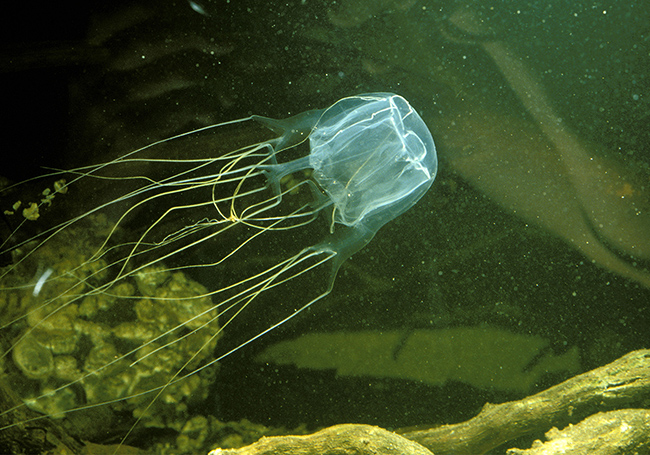
A five-year-old French boy passed away on Monday after being stung by jellyfish while swimming at Teluk Nipah beach on Pangkor Island.
The boy was stung on the stomach, left hand and leg in the incident that occurred at 6.45 pm.
He died while receiving treatment at Pangkor Health Clinic.
However, this is not the first incident involving jellyfish.
In February 2020, a Swedish tourist died of jellyfish sting. A few years earlier, another Swedish tourist also died from similar cause in Tanjung Rhu, Langkawi.
Meanwhile, a Brunei tourist died in Pulau Pangkor from the exact cause in 2000.
Last year, the Lahad Datu hospital reported six children, aged between 4 and 9, from Kota Belud, Semporna and Lahad Datu dead due to the jellyfish venom.
The children suffered from systemic envenomation symptoms, which caused lung and heart failure.
The types of Jellyfish on Malaysian shores

Jellyfish stings are one of the most common causes of marine animal-related injuries in humans.
The creature looks harmless and usually floats on the surface of the sea.
The ones found in Malaysia can be as heavy as 50 kg.
The common species in Malaysia is Chrysaora Quinquecirrha or commonly known as box jellyfish.
In reality, very few jellyfish require medical attention other than basic first aid.
Despite mostly being harmless, box jellyfish species can cause venomous stings leading to fatalities or systemic envenoming symptoms.
Malaysian Society on Toxinology (MST) executive council member Dr Muhamad Na’im Ab Razak said several species of jellyfish could cause envenomation symptoms.
The list of dangerous jellyfish is as follows.
- Chironex Yamaguchi – Box jellyfish/belun
- Physalia physalis – Portuguese man o’ war
- Carybdeid box jellyfish – Belun Klinik
- Chrysaora Chinensis – Belun api
- Sanderia Malayensis
- Lobonemoides robustus
- Acromitus Flagellatus
- Cotostylus Townsendii
- Linuche Aquila.
What to do if you are stung

According to research conducted last year, Aaina Iryani Mubarak, Wan Nur Aida Wan Mohd Shukri, and Ahmad Khaldun Ismail said that the highest occurrence of a jellyfish sting is between 5 pm to 7 pm.
Furthermore, the jellyfish stings were likely to occur at the seashore rather than within the deep sea.
Jellyfish tend to drift along the current, becoming alienated onshore and along the coast.
When one is stung, they develop persistent pain over the area, develop rashes, experience back pain, restlessness, headache and sweat profusely.
Intense pain may develop immediately, followed by exposure to the toxicity of the venom.
Here are some things you should do if you get stung by the jellyfish.
- The jellyfish venom may cause paralysis, so quickly swim back to the shore.
- Rinse the wound with vinegar or saltwater and remove the tentacles.
- Do not touch the wound or rinse with freshwater as it may cause envenoming.
- Most importantly, rush the victim to the nearest hospital for treatment.
Beach goers need to be aware of the jellyfish high season. It is best to avoid swimming in the sea during these high seasons.










